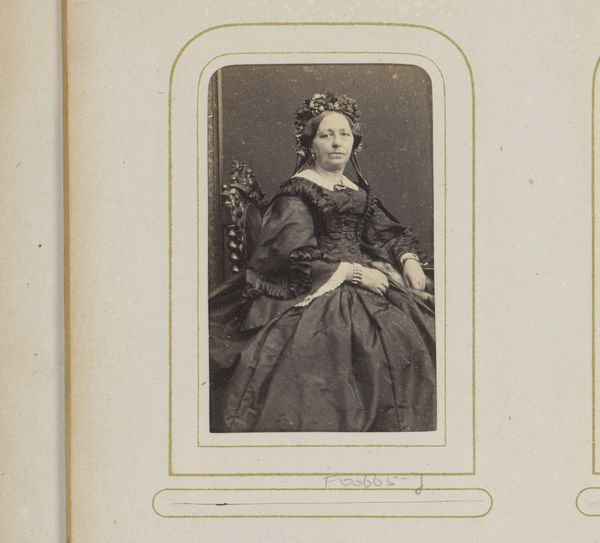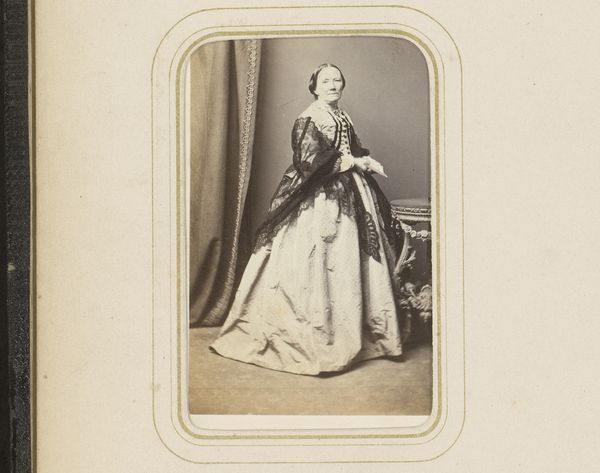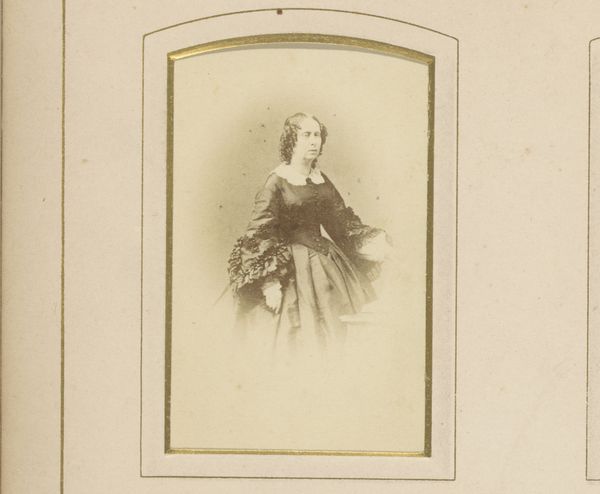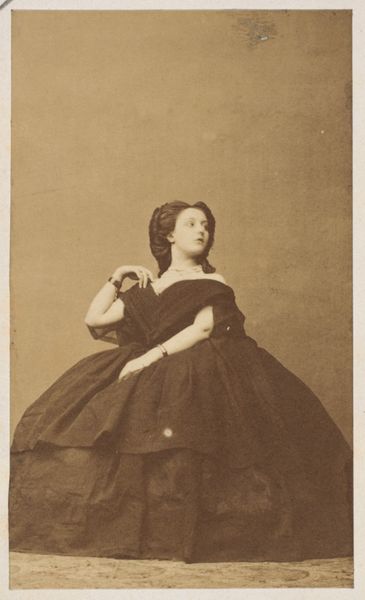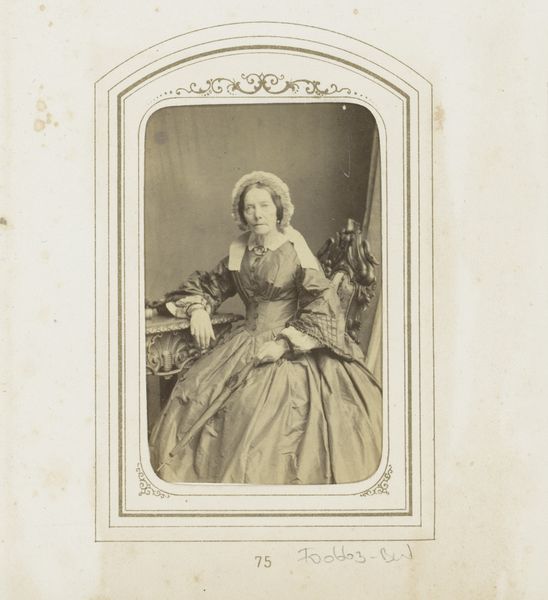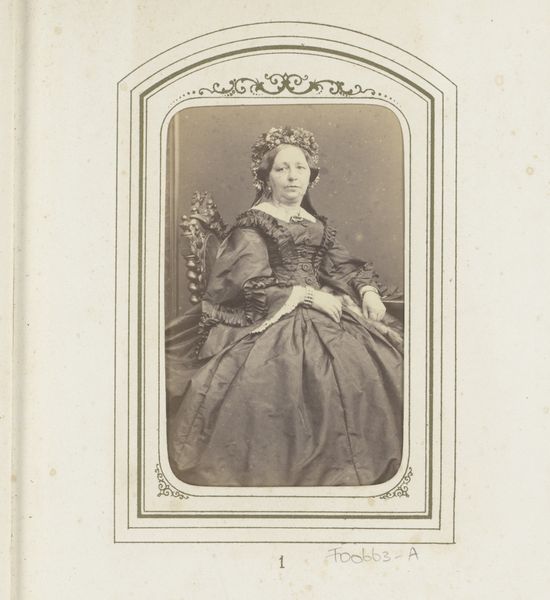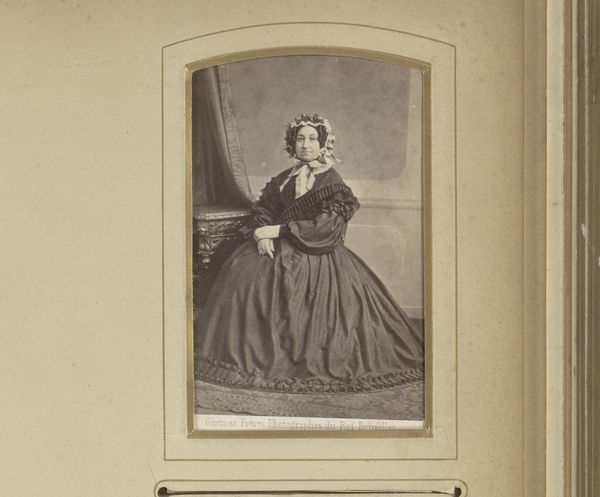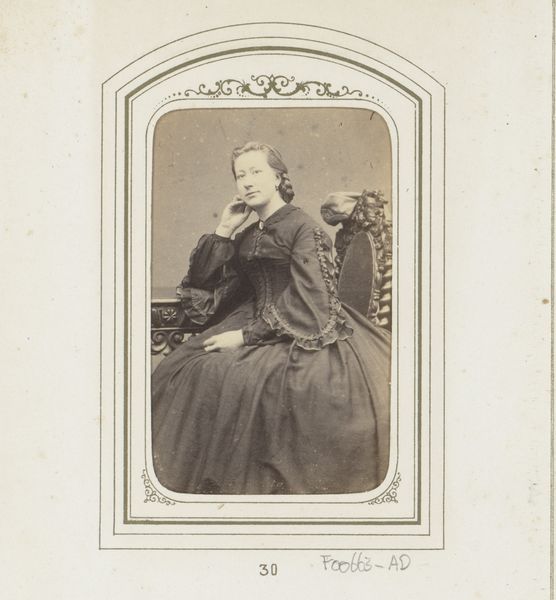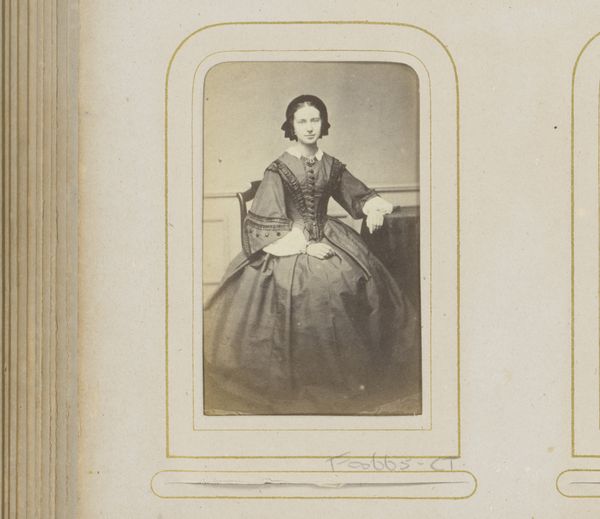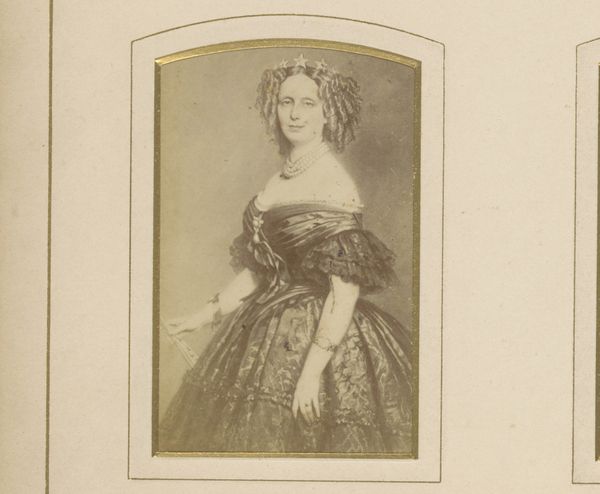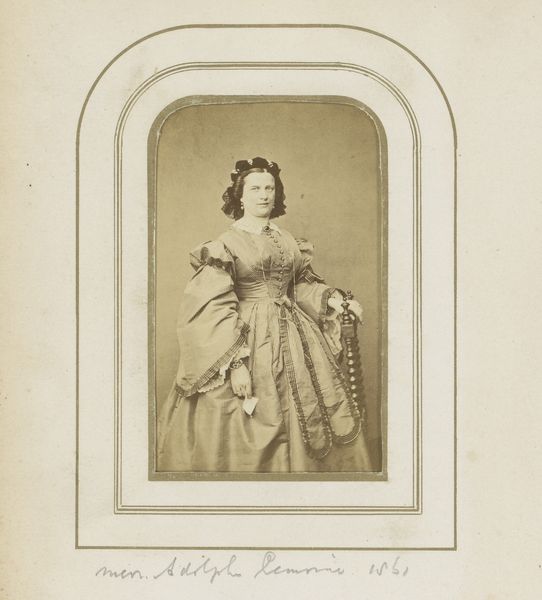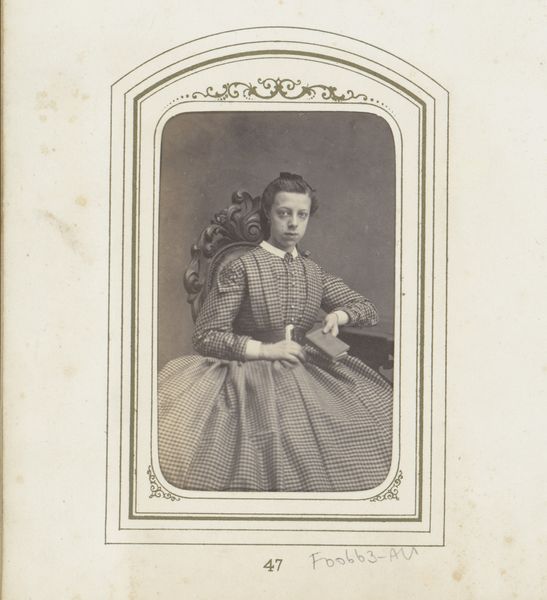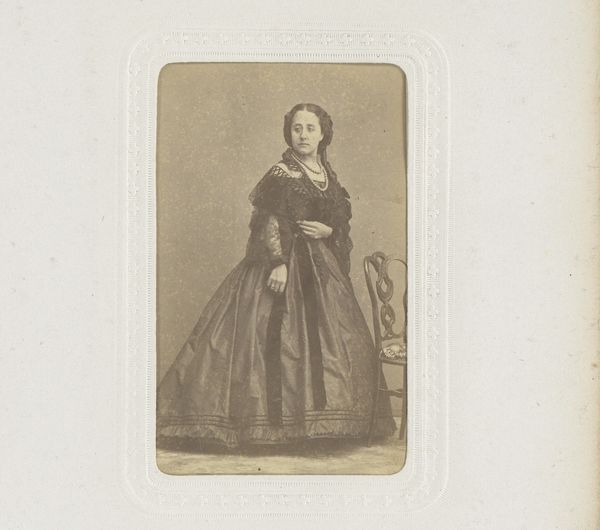
daguerreotype, photography
#
portrait
#
daguerreotype
#
photography
#
historical photography
#
19th century
#
genre-painting
Dimensions: height 83 mm, width 52 mm
Copyright: Rijks Museum: Open Domain
Curator: Oh, this one gives me the shivers in the best way possible. Like a story whispered from another century. Editor: And quite a story it is. This daguerreotype, currently held in the Rijksmuseum, is entitled "Portret van een vrouw zittend bij tafeltje," or "Portrait of a Woman Sitting at a Table," attributed to Louis Wegner. It’s thought to be from sometime between 1850 and 1864. Curator: Her eyes! They bore into you with this quiet strength, almost challenging you to see past the dress, the stiff pose. There’s such a starkness to the medium, you know? Every line etched in silver, pulling shadows forward like secrets. Editor: Yes, daguerreotypes capture so much detail, making the material culture surrounding the sitter particularly meaningful. The puffed sleeves, the sweep of the skirt…they represent status, the era's fashion, of course, but they also construct a specific feminine ideal. We read the symbolism, and instantly her place in society snaps into focus. Curator: Maybe, but I also wonder about the woman *in* the dress. I get a sense she’s… rebellious? Like she's agreed to play this role, but her eyes give her away, you know? Like she's trapped in a box—or a gilded frame!—but on the verge of breaking free. Editor: Well, these early photographic portraits were incredibly rare and somewhat ceremonial. It took time, effort, and a not insignificant amount of money to commission one. So, the very act of sitting for this portrait declares something important about her and those closest to her. Perhaps it was a declaration of selfhood in a changing world, the visual equivalent of planting a flag. Curator: A flag…or a carefully disguised message in a bottle, thrown out into the future, which is now us. Thinking about what remains—the physical object, her unyielding gaze, and whispers of a name—I wonder what she would think of this conversation. Of us trying to decode her. Editor: Maybe she'd find the whole thing a bit of a laugh, to see us poring over what, to her, was probably just a Tuesday! But these echoes of the past invite us to meditate on memory, on the fleeting nature of existence... on who decides what is remembered.
Comments
No comments
Be the first to comment and join the conversation on the ultimate creative platform.
